The Best Rock Climbing Gear of 2023 for All Skill Levels, Tested and Reviewed
Rock climbing naturally brings out the gear geek in all of us. The equipment itself is just plain sexy—and as sport-specific and downright essential as it gets. If you rock climb, or aspire to, you won’t be getting very far without most of this stuff. From ropes, camming devices, and state-of-the-art hardware to functional yet fashionable apparel, the right gear is your best insurance policy in the best climbing destinations.
Sporting the best climbing gear signals your allegiance to the sport. It doesn’t matter if you’re training in an indoor climbing gym, heading to a local boulder field, or flying to Patagonia for that one sweet shot at Fitz Roy. Not only will you be instantly recognizable as a member of the true hard rockers, but by having the right gear, you’ll have more fun and climb better.
Related: Mountaineering 101: Best Guides to Learn How to Climb
Our Testing Process
How did we come up with this list? An elite team of testers with 157 years of combined climbing experience first scoured the 2023 equipment and apparel lineups from dozens of top hardware and apparel manufacturers. We then picked the best of the best to try out ourselves.
We climbed a lot—from the legendary cliffs along the French Riviera and Chamonix to the sandstone of Jordan’s Wadi Rum, and the wild-west limestone of Ten Sleep, WY, to the castellated peaks of the Canadian Rockies.
The gear and apparel you’ll find in this guide is, simply put, best-of-class. We purposely haven’t included some of the “commodity” equipment, like 9mm ropes for leading sport climbs, locking carabiners, or climbing shoes, as buying these items is pretty straightforward. Rather, we leaned in toward more specialty gear that you may not have considered. Trust us, once you get your hands on it, you’ll wonder how you ever survived without it.
Climbing is a fun, adrenaline-pumping activity—or should be. It can also be treacherous. Having the best climbing gear and knowing how to use it reduces some of the anxiety. Fortunately, both gear and apparel are built to withstand years of abuse. You may pay more upfront, but you’ll get your money’s worth. Here are our favorite 27 climbing gear items, divided into three groups: apparel, equipment, and basecamp essentials.
Men’s Journal aims to feature only the best products and services. We update when possible, but deals expire and prices can change. If you buy something via one of our links, we may earn a commission.
The Best Climbing Gear of 2023, Tested and Reviewed
The Best Climbing Apparel of 2023
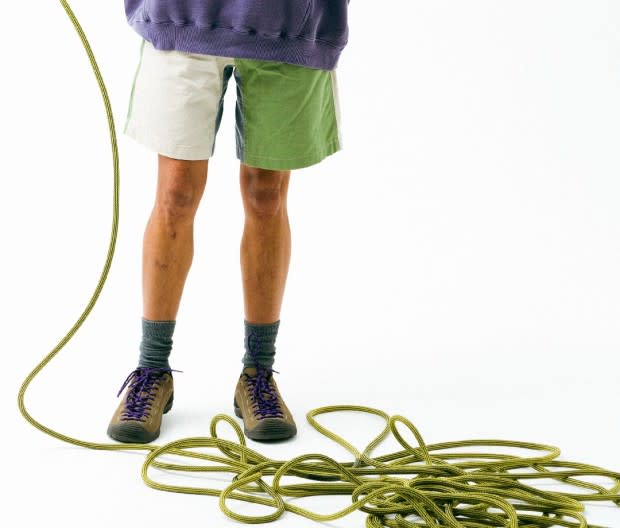
Courtesy image
1. Gramicci G-Short
Gramicci was one of the first climbing-specific brands in the U.S. Founded in the 1980s by climber Mike Graham, Gramicci was known for its loose-fitting cotton twill pants with a gusseted crotch; all the Yosemite legends wore them. Now based in Japan, the brand features both original and new designs and a remarkable color palette that old-school climbers could only dream of. Not surprisingly, the iconic G-Shorts and Pants (introduced in 1982) with their easy-to-adjust integrated waist belt, relaxed fit, side seam pockets, are still best-sellers.
[$80; gramicci.com]
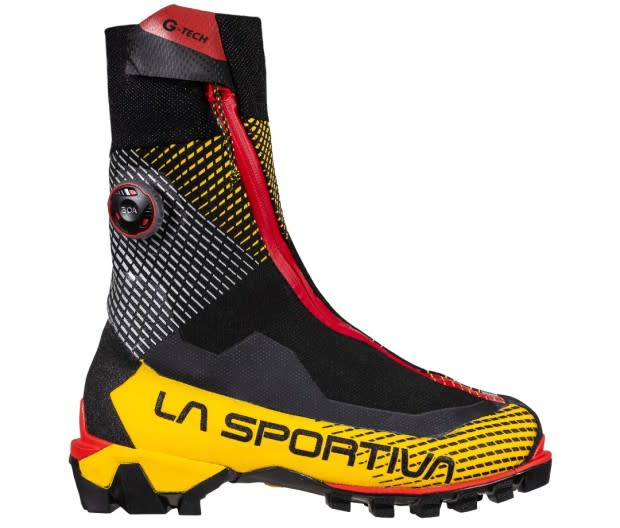
Courtesy image
2. La Sportiva G-Tech Mountaineering Boots
La Sportiva’s G-Tech Boots are the ultimate tools for mountain missions. Not only are they armor for your feet, but the zippered gaiter keeps out scree, snow, and dirt. The Vibram sole ensures excellent traction whether you’re boulder hopping or traversing a glacier, and the BOA fit system lets you quickly adjust the fit—looser for casual uphills and snugger for technical climbing. The boots are crampon compatible, so you can use them for winter ice as well as summer scrambling.
[$769; backcountry.com]
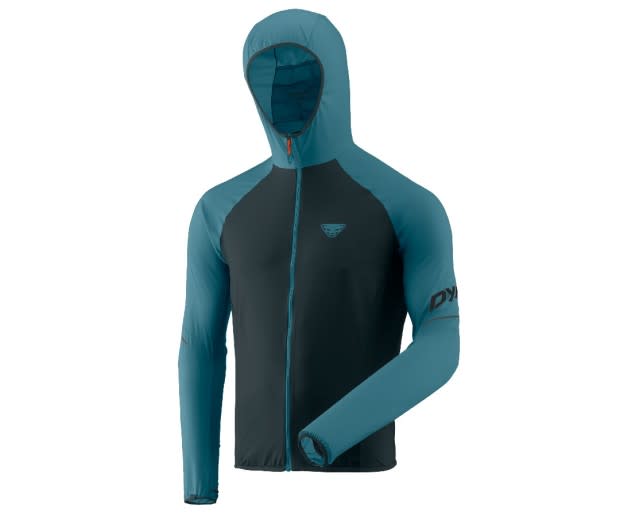
Courtesy image
3. Dynafit Alpine 2 Wind Jacket
At 3.3 ounces, the Alpine 2 Wind Jacket is lighter than most nutrition bars, and packs into an integrated stuff sack. It provides essential protection when the wind picks up or temperatures drop. “I never go into the backcountry without it,” says one seasoned climber who credits the jacket for saving his butt on a long multi-pitch route in Wadi Rum. The ultralight fabric is wind- and water-resistant and breathable, and thumb loops keep the sleeves over your hands. The hood adds even more warmth, and it fits well under a helmet. Mesh fabric on the back adds breathability without compromising protection.
[$140; moosejaw.com]
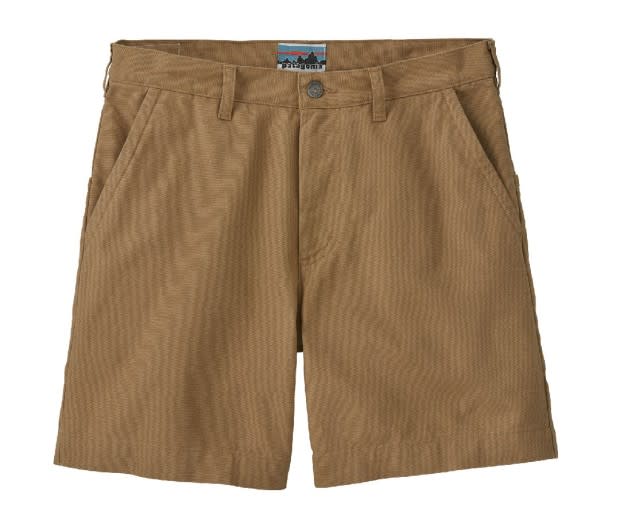
Courtesy image
4. Patagonia Stand Up Shorts
When these organic cotton shorts were first introduced in the ‘70s, they were “dirtbag” climbers’ apparel of choice from Yosemite, CA, to New Paltz, NY. The “Stand Up” moniker speaks to the durable, stiff cotton cloth, but also to the fact they'll probably be worn for months without washing. The blend of fashion and function is still on the cutting edge for climbing apparel, whether you’re living the van life or staying in 5-star digs.
[$89; patagonia.com]
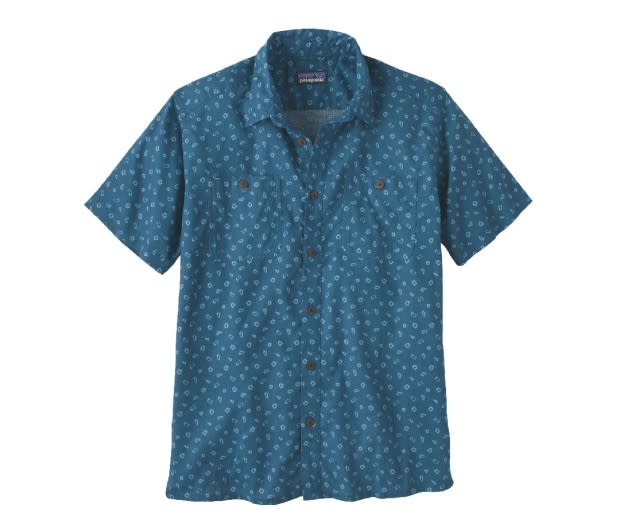
Courtesy image
5. Patagonia Back Step Shirt
Patagonia arguably invented the concept of climbing clothes that would seamlessly transition from rock to restaurant. The Back Step is designed for climbing with its off-set shoulder seams (no rubbing when you’re wearing a pack) and a longish shirt-tail hem that doesn’t pull up past your waist when you’re stretching for a handhold. The soft, breathable material (55 percent hemp, 45 percent organic cotton) has enough give to allow for great range of motion.
[$79; patagonia.com]
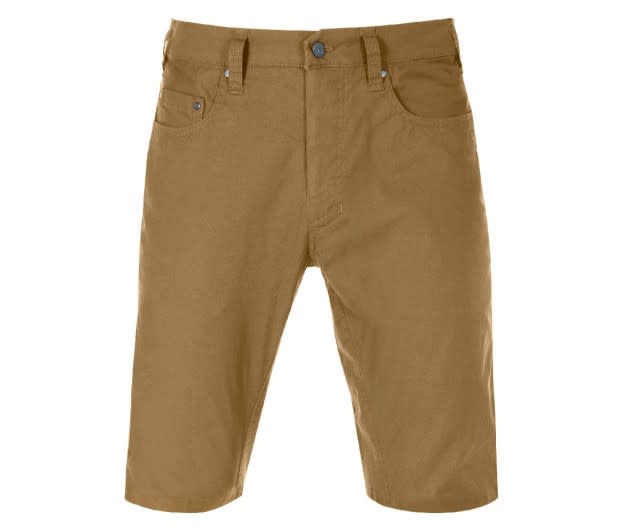
Courtesy image
6. Rab Radius Shorts
Rab Radius Shorts rate high on the style scale, but perform even higher in terms of function. They have a gusseted crotch that allows for high steps and stems—like when you’re doing splits between two rock walls. The material is a mid-weight cotton canvas that’s soft and supple while holding its own against sharp So Cal granite. There are four pockets and belt loops. Testers appreciated that they come in a regular (10 inch) and long (12 inch) version.
[$65; amazon.com]
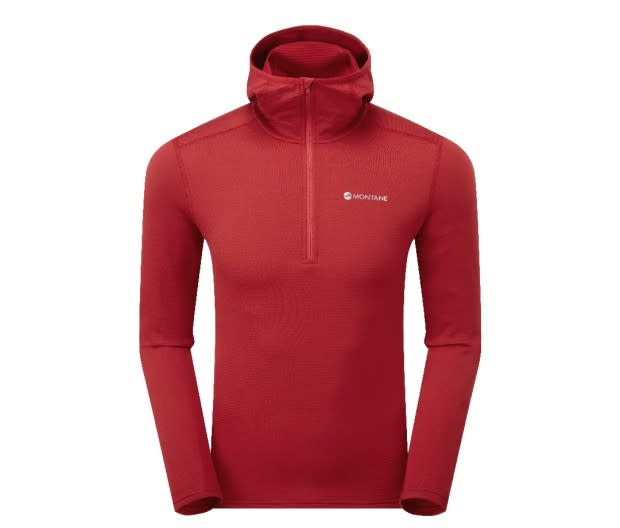
Courtesy image
7. Montane Protium Lite Long Sleeve Hoody
Montane Protium Lite Long Sleeve Hoody is your go-to lightweight layer for dawn patrol missions and cool evenings when you’re stuck on a route in the shade. This waffle-grid fleece hoody has an excellent warmth-to-weight ratio and stuffs down to the size of a grapefruit. The hood disappears under a helmet, and the 1/3 length front zipper provides venting when you need sun protection in sweaty conditions.
[$109; moosejaw.com]
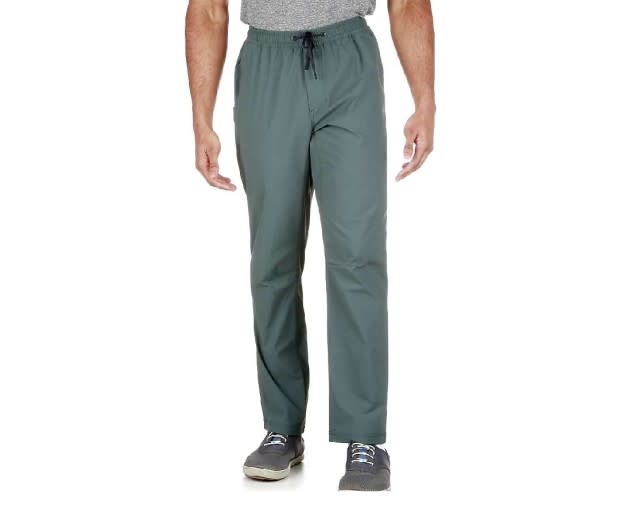
Courtesy image
8. Mountain Hardwear Basin Pull-On Pant
The secret is simplicity with Mountain Hardwear's Basin Pull-On Pant. There’s an elastic waist (no fly), two hand pockets, and two back pockets (one zippered). The slightly stretchy fabric has a PFC-free DWR finish, meaning the material won’t soak up water, and it resists stains. The straight-leg design is critical when you’re searching for footholds, and articulated knees mean the only restriction for high-steps is your own flexibility.
[$79; amazon.com]
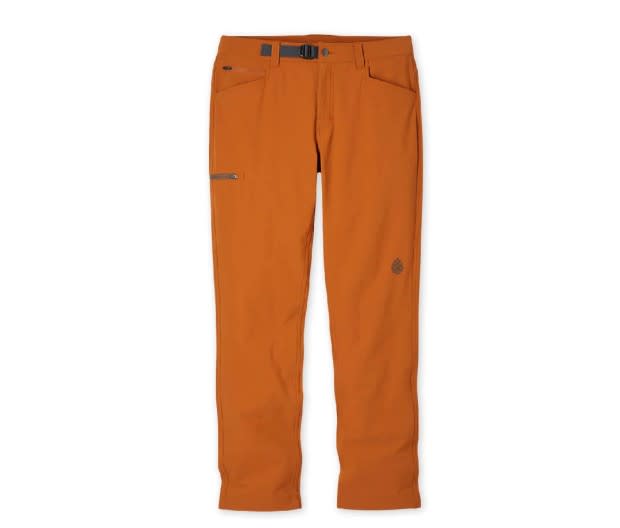
Courtesy image
9. Stio Pinedale Pants
Pinedale is a sleepy little town in Wyoming that’s surrounded by some of the best climbing in the U.S. In other words, it’s somewhat of an insider’s secret—and the same goes for the Pinedale Pants. These are “go anywhere, do anything” pants, with a four-way stretch nylon fabric and a DWR finish that can take you from the steep rock of Aiguille du Midi to the Albert Premier restaurant without changing clothes. Two hand pockets, a zippered phone pocket, gusseted crotch, and two lengths (30 and 32 inch) make these pants essential in any wardrobe.
[$169, stio.com]
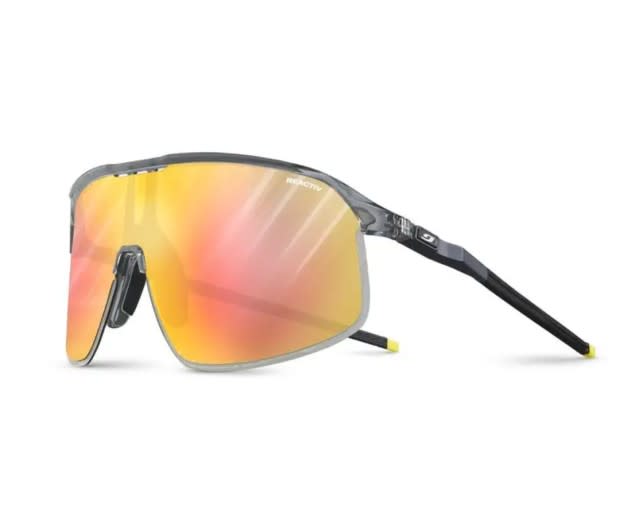
Courtesy image
10. Julbo Density Sunglasses
Sunglasses provide eye protection from dirt, sun, and even small rocks. Look for big, low-profile lenses that provide side protection. Julbo's Density specs are our current favorite because they fit well under a helmet. The soft, rubberized temples and flexible nose bridge grip make the glasses cling to your face like duct tape (even nicer than it sounds when you’re 1,000 feet off the deck). Testers loved how the oversized cylindrical lenses provide an unobstructed field of vision. There are a variety of lenses to choose from. We like the Reactiv 0-3 High Contrast for climbing, as it adjusts to everything from harsh sun to full shade.
[From $169; backcountry.com]
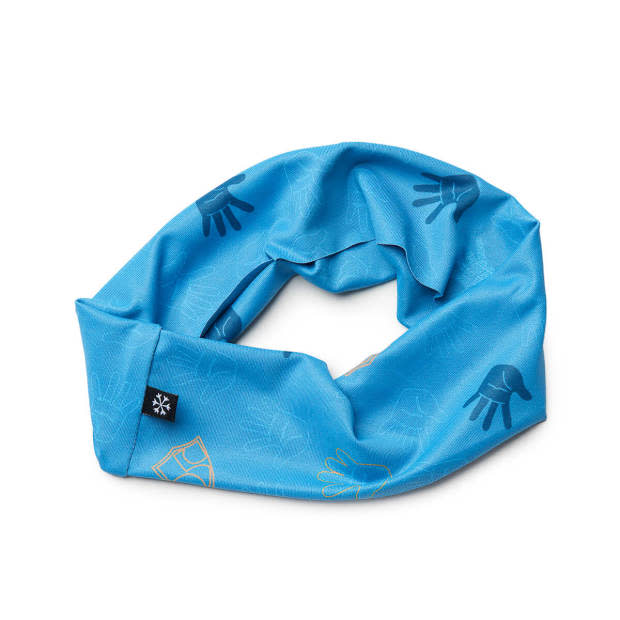
Courtesy Image
11. Skida Throwback Headband
Headbands are back with a vengeance, and Skida—a Vermont-based brand—is the leader in hip designs. Its Throwback designs keep hair out of your eyes with a Jimi Hendrix-meets-the outdoors vibe. The headband also doubles as a neck gaiter for sun protection or extra warmth. For sun protection, testers fought over the Buff Domus Military Cap ($30), a lightweight, five-panel cap that fits smoothly under a helmet.
[$18; skida.com]
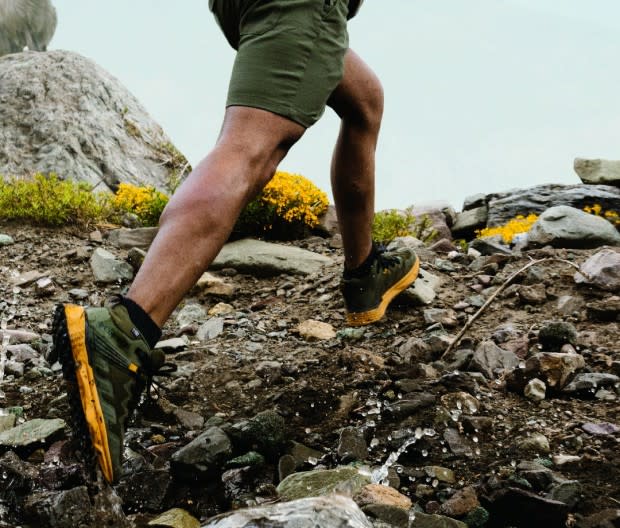
Courtesy image
12. Columbia Facet 75 Mid OutDry Shoe
On a multi-day trip up Spencer Glacier, AK, that involved 17 miles through mountains, glaciers, and lakes, Columbia's Facet 75 Mid OutDry Shoe proved their chops. “The traction was amazing on slippery, wet rock and ice,” says one tester. “And, although we walked through mud and actual streams, the OutDry waterproofing kept my feet bone dry.” A TPU midsole provides stiffness for edging without compromising flex for walkability. Laces lock down to keep the shoes consistently secure, so there’s no need to retie on the fly.
[$140; amazon.com]
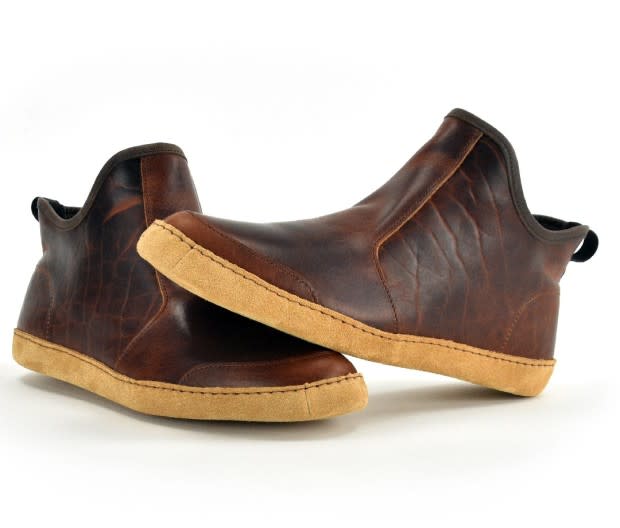
Courtesy image
13. Queen City Hi-Top Slippers
Few sports are as cruel to your feet as climbing. Provide some instant, post-climb kindness with these comfy slippers to slide into between boulder problems, gym routes, and long days at the crag. Our testers gave Queen City's Hi-Tops 10 out of 10 stars for their lightweight comfort and old-school style. The handmade leather slippers come in slides, low-top, and hi-top versions. While the leather soles are great for around the house, fork out the extra $50 for rubber soles so you can wear them outdoors.
[From $160; queencitydrygoods.com]
Best Climbing Equipment of 2023
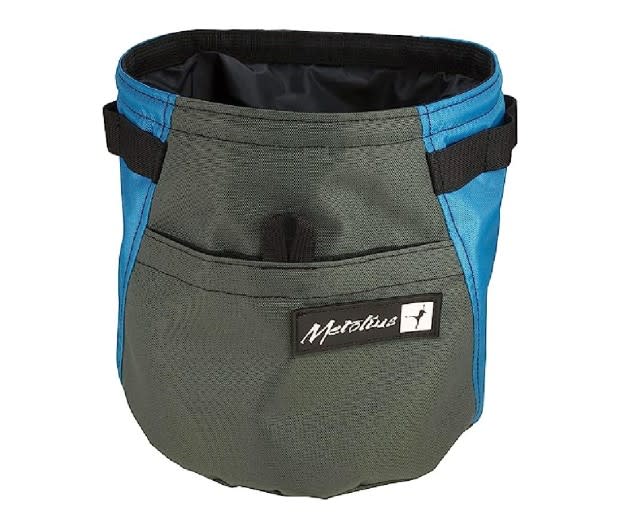
Courtesy image
1. Metolius Access Fund Comp Chalk Bag
Climbing chalk gives your fingers better traction on hold. With the Metolius Access Fund Comp Chalk Bag, you can climb harder and show support for the sport’s most important advocate: A portion of the proceeds goes to the Access Fund to protect America’s climbing areas. The bag is just the right size (not too big or small) and comes with graphics from three iconic climbing destinations: Oregon’s Smith Rock, Wyoming’s Grand Tetons, and California’s Yosemite. There’s a toothbrush holder and belt with a side-release buckle. We also like the Cotopaxi Halcon Chalk Bag ($32.50) for its soft fleece lining and use of factory remnants that result in no chalk bags being the same.
[$20; moosejaw.com]
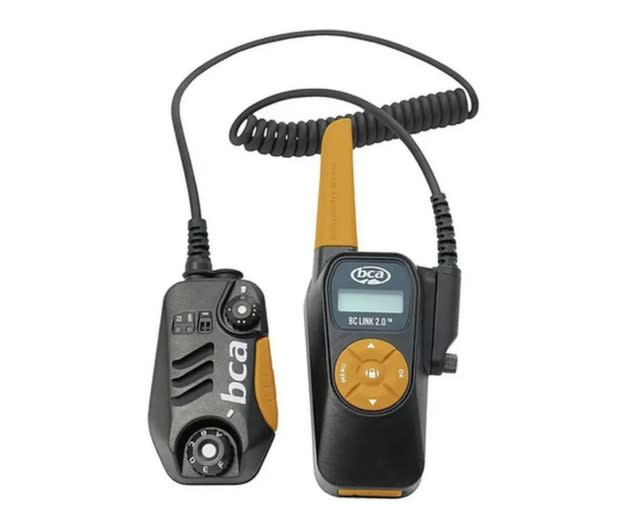
Courtesy image
2. BCA BC Link 2.0 Walkie Talkie
Communication is everything when you’re climbing. Above all the ambient noise from wind, water, and other climbers, it’s critical to know when your partner is on or off belay, and to stay together on approaches and descents. Two-way radios are the way to go. The BCA BC Link 2.0s are light (11 ounces) and have a reliable range of about six miles (40 miles with full line-of-sight). Testers got great reception during a climb on Wyoming’s Grand Teton. These handy devices are year-round tools, as they’re an important part of any ski mountaineering kit as well.
[$190; backcountry.com]
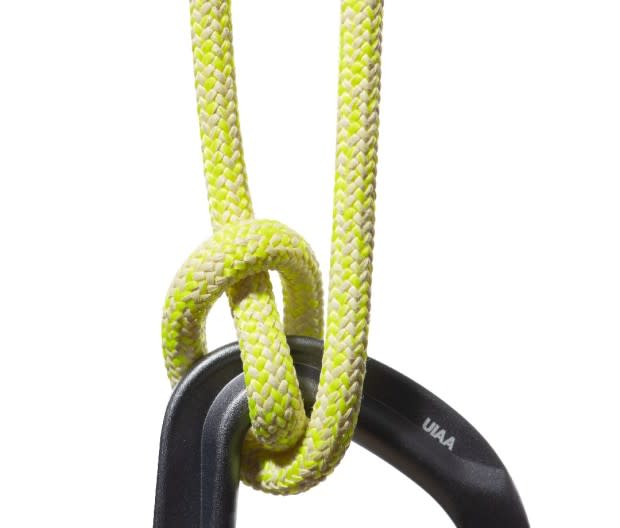
Courtesy image
3. Mammut 6.0 Glacier Cord Dry Rope
Summer is a great time for exploring glaciers. The 6.0 Glacier Cord Dry is definitely a specialty tool. It was developed specifically for glacier treks (and for skiers and mountaineers), rappels, haul maneuvers, or crevasse rescues. It’s strong (over 3,000-pound tensile), light (1.5 kg), doesn’t stretch, and compact (6 mm in diameter) enough to leave it in the bottom of your pack as an emergency rappel rope. The “Dry” treatment ensures it won’t absorb water and freeze. Remember, this is not a rope for lead climbing—which requires a fatter (heavier) rope with more stretch. For a lightweight rappel and rescue cord, this one can’t be beat.
[$260, 60m; amazon.com]
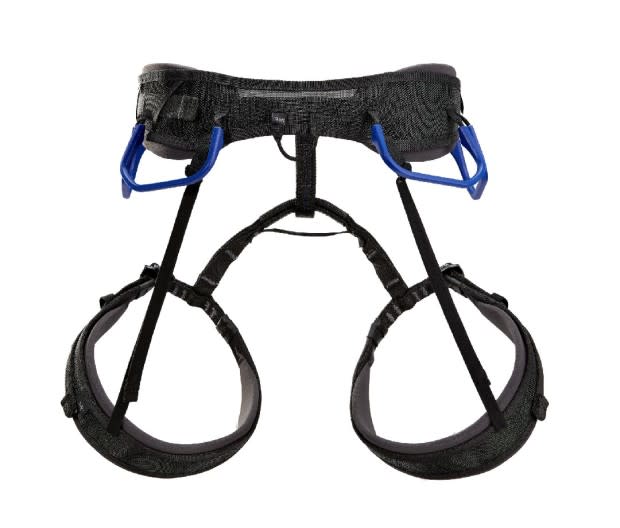
Courtesy image
4. Arc‘teryx Konseal Climbing Harness
There are many good climbing harnesses on the market, but our testers favored the Arc‘teryx Konseal. It's “comfortable, light, and has a super-clean design,” reported one climber after a month-long road trip. The nylon mesh and four-way stretch, double-weave construction keep weight down while maintaining the strength required for safety. The harness is lightly cushioned, but still streamlined enough that it doesn’t feel bulky.
[$130; arcteryx.com]
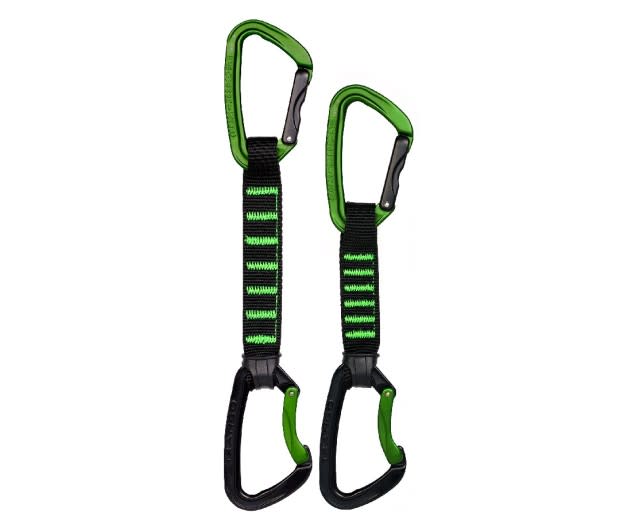
Courtesy image
5. Trango Reaction Quick Draw Six Pack
Quick draws are your connection between the rock and your rope. When you’re clipping bolts, you want carabiners that have snappy gates and are easy to handle. We like the low weight and secure key-lock closure design of Trango's Reaction Quick Draw, coupled with thick nylon “dogbone” slings that securely connect them. You can buy each “Draw” separately, but the set of six is a stellar deal.
[$155; amazon.com]
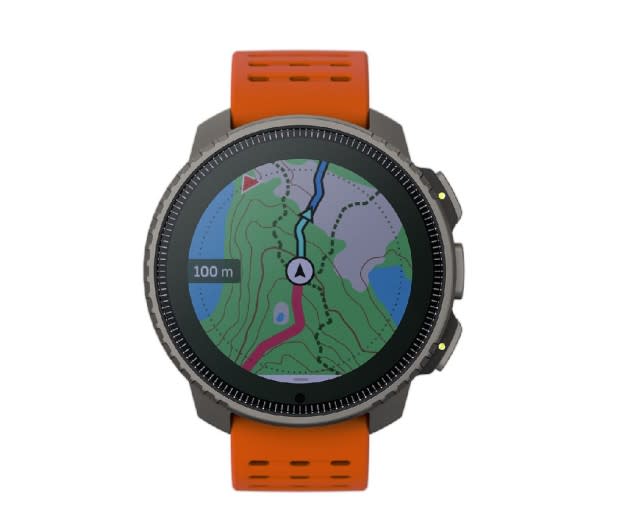
Courtesy image
6. Suunto Vertical Sports Watch
The trouble with most sports watches is the battery often dies before you’re out of the backcountry. Suunto Vertical offers up to 500 hours of power for exercise tracking and about 60 hours in the map mode. The Titanium version has solar charging to add about 30 percent on sunny days. There are free offline maps and a dual band GNSS tracking mode that connect with five satellite systems simultaneously (GPS, GLONASS, GALILEO, BEIDOU, QZSS) and up to 32 individual satellites. Add the other useful features: weather forecast, compass, barometer-based altitude readings, and storm alarms, and you have a watch you’ll never leave home without.
[From $629; suunto.com]
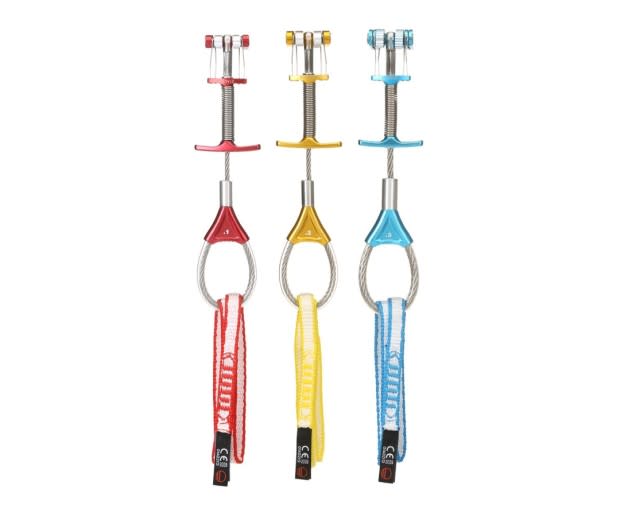
Courtesy image
7. Wild Country Zero Friends
These camming devices are excellent rock protection for traditional climbs. They’re called "friends" because in a tight situation, they're just that: your best friends. The new Wild Country Zero Friends have solid holding power in small placements, and are the ultimate safety weapon for thin cracks, pockets, or pin scars on cutting-edge climbs. They’re lightweight and incredibly strong. I always keep a set in my pack whether I’m rock climbing, mountain climbing, or ski mountaineering, as the ability to safely attach my rope to the rock can be a lifesaver. Each Zero Friend comes with a 10-inch sling. Bring along a few quick draws, too. For a lightweight belay/rappel device, go with the Wild Country Pro Lite Guide as it’s easy to use and works with ropes of almost any diameter.
[$230 for set of 3; amazon.com]
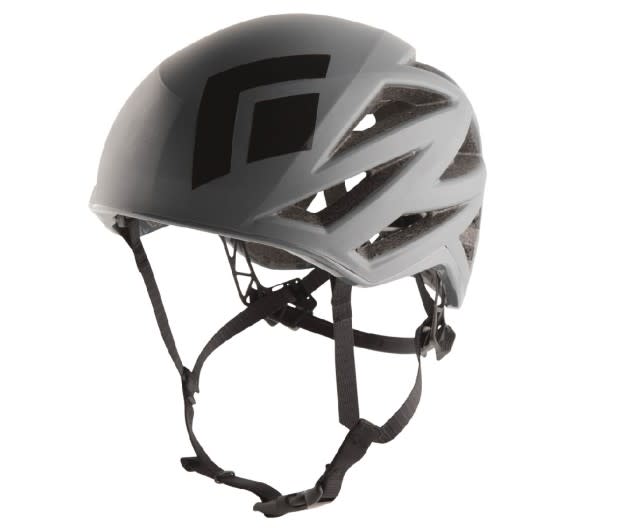
Courtesy image
8. Black Diamond Vapor Helmet
At only 5.4 ounces, this helmet definitely won’t weigh you down. More importantly, it serves its protective purposes as well as far heavier lids. The superlight Black Diamond Vapor Helmet’s two-piece construction contains a layer of feather-weight ALUULA composite under the polycarbonate crown for added protection and reduced weight. Molded EPP foam makes up the sides, providing ample venting with the same sleek aesthetic. The Vapor comes in S/M and M/L. The low profile makes it easy to slip into your pack, but its light weight means you’ll forget you’re wearing it.
[$140; amazon.com]
Best Climbing Basecamp Essentials of 2023
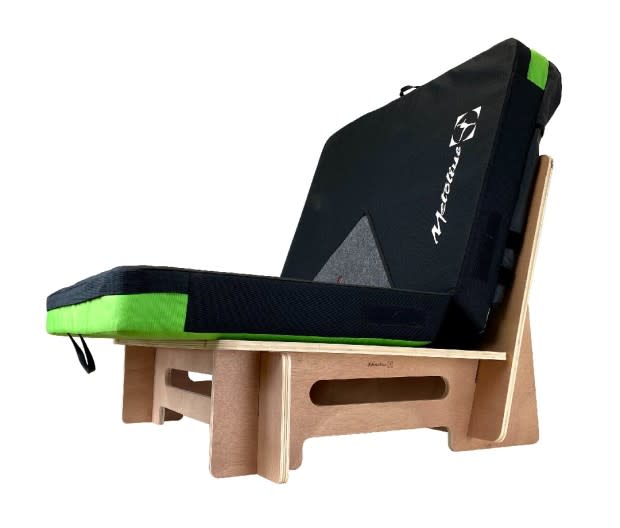
Courtesy image
1. Metolius Crash Pad Couch
This simple design is the coolest thing we’ve seen in years. Metolius Crash Pad Couch is a lightweight (22 pounds) plywood frame that turns any bouldering pad into a very hip couch. It’s ideal for basecamp, van life, dorm rooms, and everyday furniture. The structure folds flat so you can pack it up and move it to your next climbing area. Pair the Couch with Metolius’ best-selling bouldering pad. The Sessions II Crash Pad ($200) has shoulder straps for carrying, a burly 900d poly fabric that’s virtually indestructible, and 4-inch foam padding to protect you whether you’re jumping off highball boulders or lounging in the chair and planning your next adventure.
[$130; backcountry.com]
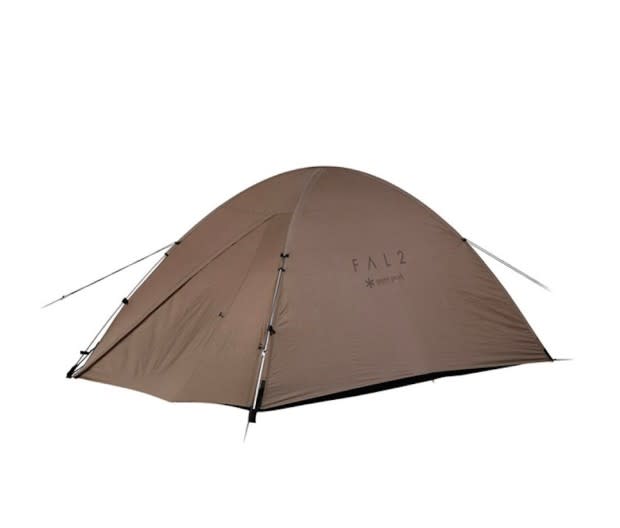
Courtesy image
2. Snowpeak Fal Pro.air 2 Tent
If you’re camping and climbing, chances are you’ll be setting up your tent in the dark and/or a storm now and then. Our testers loved the fact they could erect the Fal Pro.air 2 in under two minutes. There are just two tent poles, so there’s none of the fumbling around you get with a more complex shelter. At under four pounds, this lightweight, two-person tent has a full fly, two tent poles, and withstands whatever weather mother nature decides to dish out. Pair it with the Fal 2 Ground Sheet for added protection.
[$649; amazon.com]
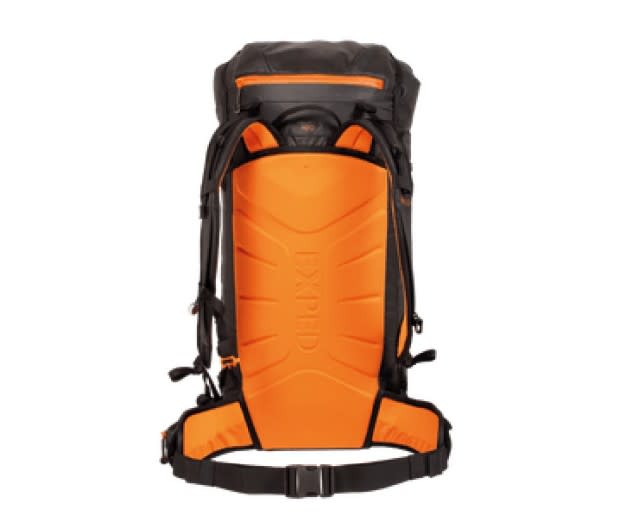
Courtesy image
3. Exped Verglas 30/40 Pack
Testers loved this lightweight mega-hauler with its wide mouth and unfettered packbag. It’s a four-season pack that fits a rack, rope (either inside or via a nifty under-the-lid carrying system), and gear. A host of smart features includes stretch mesh side pockets for phone and snacks and a 14-inch side zipper for quick access. Exped Verglas 30/40 Pack has a low-profile, close-to-body fit so it doesn’t throw you off balance when you’re scrambling or climbing. The thermo-molded back panel and lightly padded shoulder straps let you carry about 25 pounds comfortably, and the PU coated ripstop nylon material is bomb-proof. Weight is 40 ounces; strip off the exterior carry straps to save nearly a pound.
[$230; moosejaw.com]
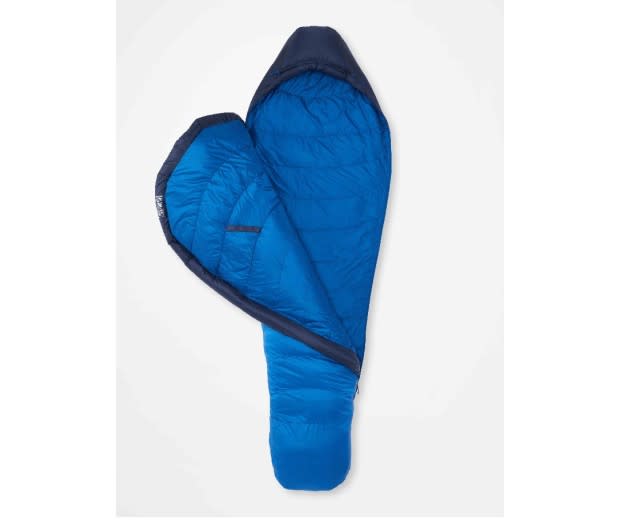
Courtesy image
4. Marmot Helium 15° Sleeping Bag
Climbers need a warm sleeping bag, whether at basecamp or for an unexpected bivvy. On those potentially “epic” climbs, our alpine-oriented testers carry the 2 lb., 2.7 oz. Marmot Helium 15° Sleeping Bag. What makes this bag stand out is that it’s insulated with light, warm, compressible, 800-fill ExpeDRY down. Developed by ALLIED Feather + Down and FUZE Technologies, ExpeDRY down is a chemical-free solution that maintains the warmth and compressibility of down while performing better in wet, humid conditions. ExpeDRY bonds FUZE Technologies’ non-ionic gold particles to ALLIED’s down insulation to increase the evaporation rate of water at a molecular level. The sleeping bag can be used as a bivvy sack when you’re going tentless. Plus, there’s a nifty inside pocket for your phone and glasses.
[$479; moosejaw.com]
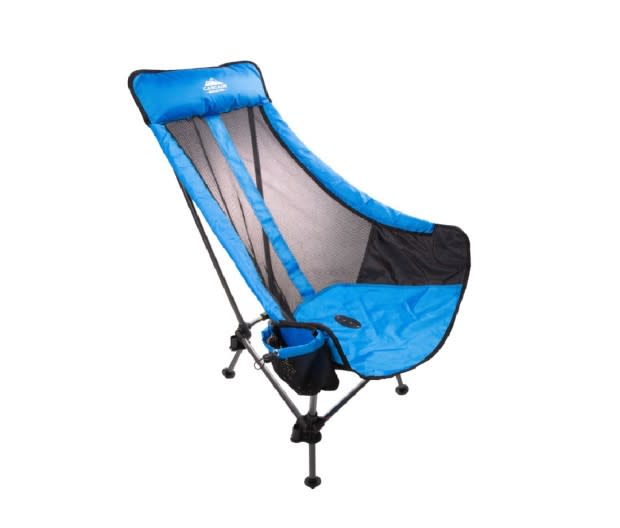
Courtesy image
5. Cascade Mountain Tech Hammock Chair
Climbing may be your main focus, but as all climbers know, sitting around camp to debrief after one adventure and plan the next takes time. Cascade Mountain Tech's Hammock Chair is supremely portable at just 5 pounds. It has a high back that’s comfortable for lounging, but the best feature are its legs that adjust from 10 to 16 inches so you can use it as a “concert chair” or camp chair, depending on how high you want to be off the ground. There’s also a cup holder and two side pockets to hold all your stuff.
[$85; walmart.com]
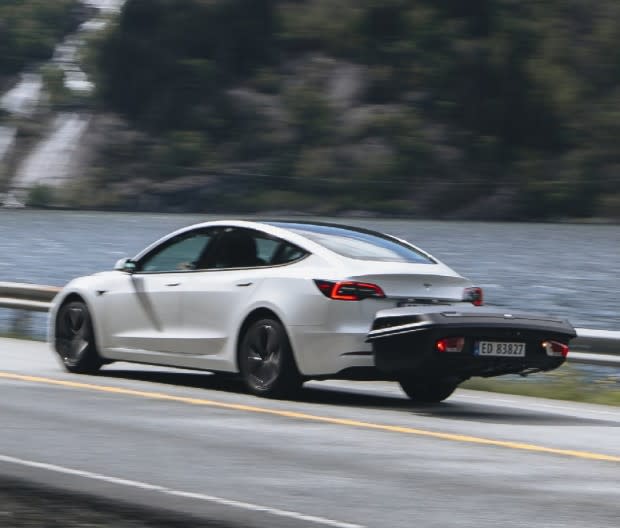
Courtesy image
6. Thule Arcos Box Hitch Carry Box
So you’ve got the perfect gear for your next climbing adventure, but how do you carry it? We recommend the new Thule Arcos. The Arcos gives you 14 cubic feet of loading space behind your car, leaving the roof free to reduce wind resistance or to carry other loads like skis, paddleboards or bikes. The box has a 110-pound capacity—which is plenty for a tent, sleeping bag, food, water, climbing rack, apparel, and your basecamp supplies. Also, the cargo box makes loading your pack easy. No need to toss everything on the ground as you sort gear. We just loaded our climbing packs directly from the Arcos.
[$1,318, Arcos Box & Thule Arcos Platform; amazon.com]


